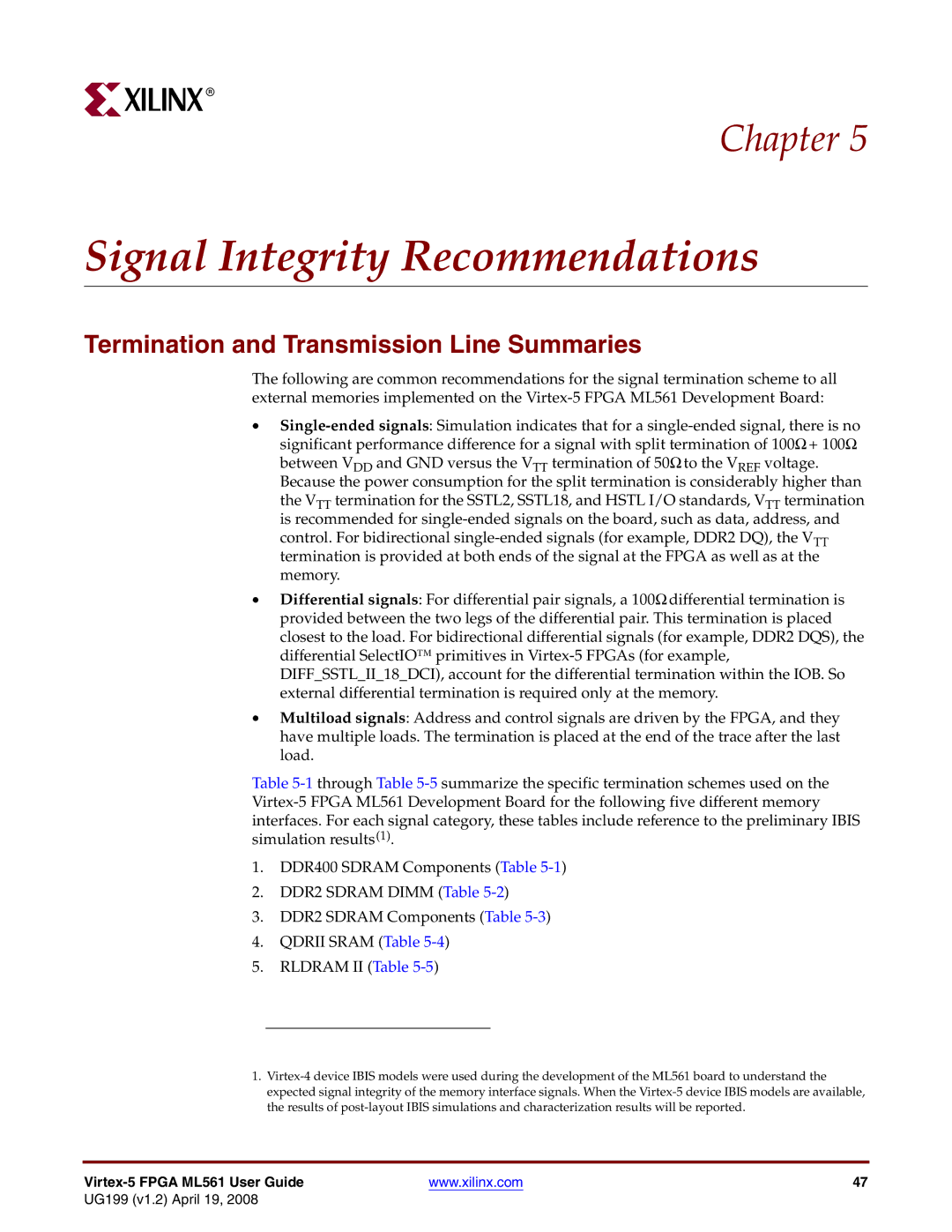R
Chapter 5
Signal Integrity Recommendations
Termination and Transmission Line Summaries
The following are common recommendations for the signal termination scheme to all external memories implemented on the Virtex-5 FPGA ML561 Development Board:
•Single-ended signals: Simulation indicates that for a single-ended signal, there is no significant performance difference for a signal with split termination of 100Ω + 100Ω between VDD and GND versus the VTT termination of 50Ω to the VREF voltage.
Because the power consumption for the split termination is considerably higher than
the VTT termination for the SSTL2, SSTL18, and HSTL I/O standards, VTT termination is recommended for single-ended signals on the board, such as data, address, and
control. For bidirectional single-ended signals (for example, DDR2 DQ), the VTT termination is provided at both ends of the signal at the FPGA as well as at the memory.
•Differential signals: For differential pair signals, a 100Ω differential termination is provided between the two legs of the differential pair. This termination is placed closest to the load. For bidirectional differential signals (for example, DDR2 DQS), the differential SelectIO™ primitives in Virtex-5 FPGAs (for example, DIFF_SSTL_II_18_DCI), account for the differential termination within the IOB. So external differential termination is required only at the memory.
•Multiload signals: Address and control signals are driven by the FPGA, and they have multiple loads. The termination is placed at the end of the trace after the last load.
Table 5-1through Table 5-5summarize the specific termination schemes used on the Virtex-5 FPGA ML561 Development Board for the following five different memory interfaces. For each signal category, these tables include reference to the preliminary IBIS simulation results(1).
1.DDR400 SDRAM Components (Table 5-1)
2.DDR2 SDRAM DIMM (Table 5-2)
3.DDR2 SDRAM Components (Table 5-3)
4.QDRII SRAM (Table 5-4)
5.RLDRAM II (Table 5-5)
1.Virtex-4 device IBIS models were used during the development of the ML561 board to understand the expected signal integrity of the memory interface signals. When the Virtex-5 device IBIS models are available, the results of post-layout IBIS simulations and characterization results will be reported.
Virtex-5 FPGA ML561 User Guide | www.xilinx.com | 47 |
UG199 (v1.2) April 19, 2008

